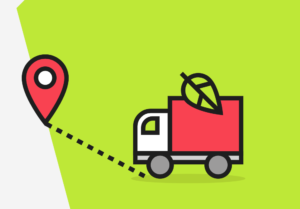People complain on social media about light commercial vehicles (LCVs) in their neighborhood. There are too many, it’s not safe and not healthy. Is that criticism justified? Only 2 to 3 percent of the nearly 1 million LCVs in the Netherlands are involved in the delivering home shopping parcels to consumers.
The number of LCVs for parcel delivery is hardly increasing. Parcel companies are constantly innovating their ‘last mile’. Large numbers of LCVs are found in the construction and food service industry; more than 50 percent. But, just not in parcel delivery.
Parcel delivery accounts for less than 1% of CO2 emissions in road transport (according to data from the Dutch Top Sector Logistics). The effect on air quality is also marginal. The parcel companies drive around in new, clean LCVs. All parcel delivery companies have plans for electric vehicles and the use of cargo bikes. Wehkamp already offers the cargo bike delivery as an option to consumers. And, DPD, DHL and UPS are rolling out cargo bike networks in European cities.
But, there is still room for improvement. The consumer (but, also the business customer) creates unnecessary CO2 and vehicle movements by ordering the same day, requiring strict time windows, by not being at home and many returns. Research shows that consumers are not aware of the environmental impact of their online order. Dutch Thuiswinkel.org presented the ‘Bewust Bezorgd Simulator’. Webshops can show consumers the CO2-impact of their online order. This can be translated into a number of car kilometres for a better understanding. For a small parcel, it is only 200 meters, for larger parcels with strict time windows perhaps 20 kilometres. The consumer can make more conscious choices. Home shopping is often more sustainable than going to the store itself.
The parcel companies will meet the Paris climate goals in 2025. Zero emission city logistics in parcel delivery is reality within 2 to 5 years. But, parcel delivery is about much more than just clean transport. Home delivery of groceries and bigger products requiring installation is often done by companies with their own vehicles (Albert Heijn, Picnic, Jumbo, Coolblue and HelloFresh). They just want to do it themselves. Growth in online food will lead more deliveries in residential areas. Our streets are not designed for this. Where today 12 to 15 LCVs come into one single street, that number will be 50 to 60 in 10 years, also in the weekends and evenings. This will lead to congestion and road unsafety.
Even an electrical LCV is not fit for our streets anymore. Light electrical vehicles and pick-up-points are better options. Webshops and parcel companies should collaborate parcel delivery zero-impact; quieter, smaller and safer. Involving the consumer in more sustainable ordering is a good start.
Walther Ploos van Amstel.

